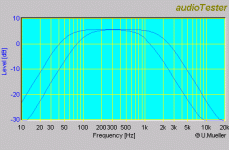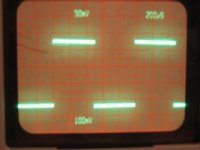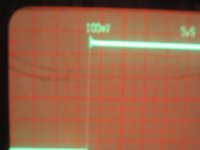I would like to thank Jens for his effort of write up the documentation. But it seems there are different versions of it. Is is possible to ask kindly our moderators to remove the links to those obsolete documents and keep the latest/up to date link of the user manual in the very first post of the thread only.
Just a thought🙂
Chris
Just a thought🙂
Chris
Thanks Chris 🙂
Webpage for the filter
http://www.delta-audio.com/Active filter two.htm
Schematics
http://www.delta-audio.com/Active_Filter_Two/Active filter TWO ver 1.0 schematics.pdf
Component placement
http://www.delta-audio.com/Active_Filter_Two/Active filter TWO ver 1.0 component.pdf
Temp manual - will be updated when the boards arrive
http://www.delta-audio.com/Active_Filter_Two/Active filter two ver 1.0 manual temp.pdf
\Jens
Webpage for the filter
http://www.delta-audio.com/Active filter two.htm
Schematics
http://www.delta-audio.com/Active_Filter_Two/Active filter TWO ver 1.0 schematics.pdf
Component placement
http://www.delta-audio.com/Active_Filter_Two/Active filter TWO ver 1.0 component.pdf
Temp manual - will be updated when the boards arrive
http://www.delta-audio.com/Active_Filter_Two/Active filter two ver 1.0 manual temp.pdf
\Jens
Active crossover activity thread
I found this while crawling among the stacks of info here:
http://www.diyaudio.com/forums/showthread.php?s=&threadid=23522&perpage=15&pagenumber=1
I only got through the first few posts before recognizing it's relevancy to using the boards offered here. Get you favorite beverage. Settle back when you have some time for creative thinking. And enjoy...
I found this while crawling among the stacks of info here:
http://www.diyaudio.com/forums/showthread.php?s=&threadid=23522&perpage=15&pagenumber=1
I only got through the first few posts before recognizing it's relevancy to using the boards offered here. Get you favorite beverage. Settle back when you have some time for creative thinking. And enjoy...
I suggest that when the boards are ready and being delivered, that separate threads be started for the rote application of the filters for specific purposes. The most obvious would be one for using the MOX as a low pass filter for a subwoofer.
That way we can have elevated discussion on this thread, and all the stupid little application questions that I'm planning to ask will be in another 😉
That way we can have elevated discussion on this thread, and all the stupid little application questions that I'm planning to ask will be in another 😉
Thanks to everyone who has responded recently. I think the questions about the number of MOX boards needed have been addressed, but there still seems to be confusion over how many opamps are needed. MBK probably had the best advice, which is simply order more than you need, if you are uncertain. Although they are somewhat expensive to populate, the boards themselves are only 60 cents per opamp, and are not as easy to reorder as the components are. 😉
One set of opamps populates one entire MOX board. Although in most circumstances this is more than you need, you won't ever go wrong ordering equal numbers of MOX boards and opamp sets.
Also, please be absolutely clear that
1 set of opamp boards
EQUALS
8 single opamps
EQUALS
4 dual opamps
POPULATES
1 fully stuffed MOX board
One set of opamps populates one entire MOX board. Although in most circumstances this is more than you need, you won't ever go wrong ordering equal numbers of MOX boards and opamp sets.
Also, please be absolutely clear that
1 set of opamp boards
EQUALS
8 single opamps
EQUALS
4 dual opamps
POPULATES
1 fully stuffed MOX board
It is encouraging to see discussion on the project. Unforunately, this is not a commercial product, and there is no master guide that can answer every potential question. I think though, that all the questions asked have been answered, so if you are wondering about something, please ask!
There is also a very nice documentation effort underway by Jens, and I will be updating my "shopping list" this weekend, in plenty of time for parts orders to be made. I will also try to collate the measurements and other information into a set of pages on my web site, so that it is not necessary to search through this thread to find information.
You can already find general info, pictures, and a link to Jens' site here: http://www.anidian.com/audio/construct/mox.shtml
I will also post a photo guide to stuffing the discrete opamps, because it is easy to get confused about how to connect them into a dual opamp arrangement. I won't have time to do that this week though.
I will try to provide this information tonight: bandpass plot, opamp offset measurement, opamp step response. I will post a stuffing guide and updated shopping list ASAP, but I won't get to this before Saturday night. 🙁
As to sockets, the 18 mil size Mill Max headers will plug into any standard DIP socket. Nothing less than gold plated machined-pin sockets should be used considering the quality of the opamps. For permanent installation, I would simply solder the opamps directly to the board and eliminate the sockets, but they are very useful for comparing/testing. Since the opamp header pads are small I would use wire links for permanent installation if you do not wish to use 18-22 mil size headers.
There is also a very nice documentation effort underway by Jens, and I will be updating my "shopping list" this weekend, in plenty of time for parts orders to be made. I will also try to collate the measurements and other information into a set of pages on my web site, so that it is not necessary to search through this thread to find information.
You can already find general info, pictures, and a link to Jens' site here: http://www.anidian.com/audio/construct/mox.shtml
I will also post a photo guide to stuffing the discrete opamps, because it is easy to get confused about how to connect them into a dual opamp arrangement. I won't have time to do that this week though.
BDP said:How about a plot of a band pass filter.
Any progress on the new parts list. What kind of sockets did you try. How about a close up of the discrete opamp off the Mox board showing the connection pins. Any measurements of output offset. Last, I think it would be a good just to show the response of the discrete opamp by itself configured as a buffer. Maybe more information will help encourage people along.
I will try to provide this information tonight: bandpass plot, opamp offset measurement, opamp step response. I will post a stuffing guide and updated shopping list ASAP, but I won't get to this before Saturday night. 🙁
As to sockets, the 18 mil size Mill Max headers will plug into any standard DIP socket. Nothing less than gold plated machined-pin sockets should be used considering the quality of the opamps. For permanent installation, I would simply solder the opamps directly to the board and eliminate the sockets, but they are very useful for comparing/testing. Since the opamp header pads are small I would use wire links for permanent installation if you do not wish to use 18-22 mil size headers.
I am offering them at my cost after shipping and fees, which is $2.50 each. Andrea found a supplier that has them priced cheaper, but they have told me that they will not get back to me with a quote and lead time before Monday.
If you can get a better small-quantity price, I encourage you to order yourself because I have somewhat less flexibility (since I need to source at least 150 more now). I obtained some from Electronix at $2.15 @ Qty 1, but they keep telling me indefinite lead time when I call.
If you can get a better small-quantity price, I encourage you to order yourself because I have somewhat less flexibility (since I need to source at least 150 more now). I obtained some from Electronix at $2.15 @ Qty 1, but they keep telling me indefinite lead time when I call.
Okay one more question to show the depth of my ignorance. Can I use the Linkwitz-Riley crossover network calculator program found on the ESP site find the component values I need to build 300hz/3000hz crossover? Or am I still completely lost in the woods???

You could, but as is 320 and 3200Hz is an option on the board. (No calculating!) You would just set the Q to 0.7 to arrive at a final Q of 0.5 for L-R 4th order. You would need four boards for 2-way LR 4th order.
If you are absolutely sure that this is the crossover frequencies you need, MOX is probably overkill. But I suspect the adjustable frequencies would be very helpful, you never know if 400Hz and 2000Hz might not sound much better. The MOX design lets you easily play with the settings.
If you are absolutely sure that this is the crossover frequencies you need, MOX is probably overkill. But I suspect the adjustable frequencies would be very helpful, you never know if 400Hz and 2000Hz might not sound much better. The MOX design lets you easily play with the settings.
Closeup. This is with no bandwidth limiting. There is less than 10% overshoot and extremely fast decay.
I took measurements at 400mV and 4V and they were essentially identical. The rise time was too quick for me to measure easily tonight, definitely faster than than 4V/uS.
I took measurements at 400mV and 4V and they were essentially identical. The rise time was too quick for me to measure easily tonight, definitely faster than than 4V/uS.
Attachments
Hi kestrel200 ,
I think maybe you are thinking along the right filter path, but have not arrived at the finishing point. The L-R response you refer too should probably be the system response rather than just the electrical response from the filterers. You see the L-R response is used because the frequency where a 1 kHz LP and HP meet shouldn’t have any bumps or dips and ADD together to 0 dB. However since you need the whole system information, including the acoustical, you might be better of listening to what you think sound right if you have no access to acoustical measuring equipment. You can of cause use the electrical L-R response as a “pointer” to get started, but I doubt that is where you’ll end with you finished filter.
I hope this helps you and others to understand that it is the SYSTEM THAT WE WANT TO ACHIEVE A L-R RESPONSE, NOT JUST THE ELEKTRICAL FILTER.
\Jens
I think maybe you are thinking along the right filter path, but have not arrived at the finishing point. The L-R response you refer too should probably be the system response rather than just the electrical response from the filterers. You see the L-R response is used because the frequency where a 1 kHz LP and HP meet shouldn’t have any bumps or dips and ADD together to 0 dB. However since you need the whole system information, including the acoustical, you might be better of listening to what you think sound right if you have no access to acoustical measuring equipment. You can of cause use the electrical L-R response as a “pointer” to get started, but I doubt that is where you’ll end with you finished filter.
I hope this helps you and others to understand that it is the SYSTEM THAT WE WANT TO ACHIEVE A L-R RESPONSE, NOT JUST THE ELEKTRICAL FILTER.
\Jens
Jens
I hope this helps you and others to understand that it is the SYSTEM THAT WE WANT TO ACHIEVE A L-R RESPONSE, NOT JUST THE ELEKTRICAL FILTER.
Thanks for the advice... but I'm already aware of that. I may be ignorant when it comes to building active crossovers but I"M NOT A TOTAL IDIOT!!!!!!
I hope this helps you and others to understand that it is the SYSTEM THAT WE WANT TO ACHIEVE A L-R RESPONSE, NOT JUST THE ELEKTRICAL FILTER.
Thanks for the advice... but I'm already aware of that. I may be ignorant when it comes to building active crossovers but I"M NOT A TOTAL IDIOT!!!!!!

Hello,
I’m truly sorry I you feel that I have approached as if you were an idiot.
Please accept my apologies if you have been offended.
\Jens
I’m truly sorry I you feel that I have approached as if you were an idiot.
Please accept my apologies if you have been offended.
\Jens
MBK said:Wow, these plots look very clean. Lying again?? 😀
When I first hooked it up I had to turn the power off to convince myself that I wasn't just measuring the input somehow, rather than the output. 😉
tiroth said:When I first hooked it up I had to turn the power off to convince myself that I wasn't just measuring the input somehow, rather than the output.
🙂 🙂 🙂
- Status
- Not open for further replies.
- Home
- Group Buys
- MOX-like crossover and discrete opamp group buy


